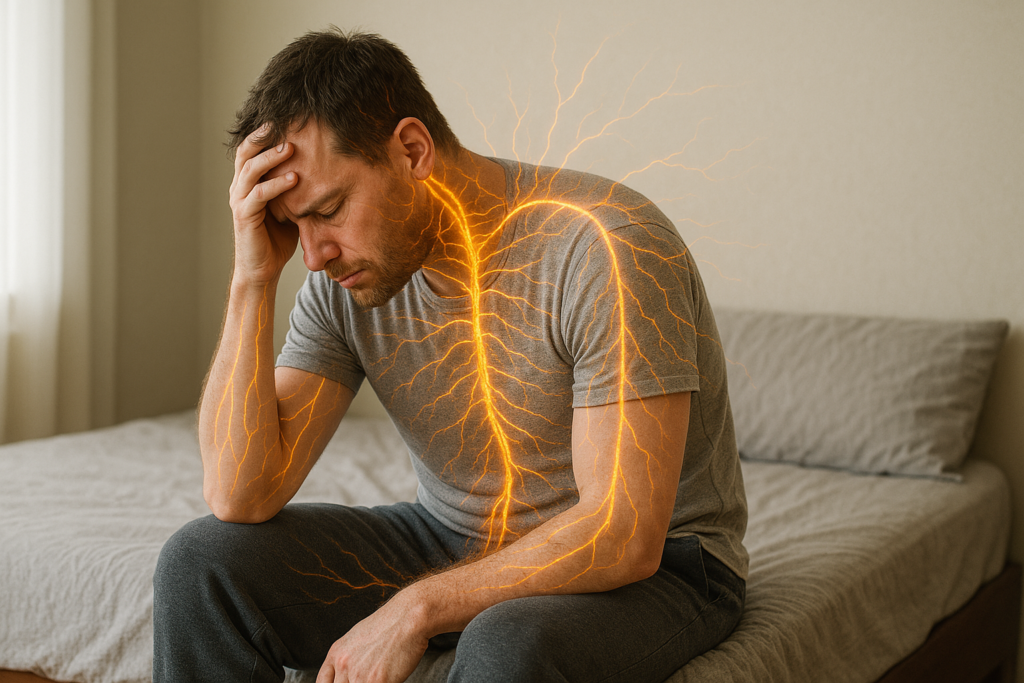Is Your Nervous System Overmedicated or Under supported?

Calm your overactive nervous system naturally: root causes, real healing tools & steps to feel safe again. Take our free assessment today!
What is a Dysregulated Nervous System?

Discover what a dysregulated nervous system is, explore symptoms & recovery options, and take our free Symptoms Assessment today!
What is the Carnivore Diet: Benefits, Risks, and Science Explained

Explore the Carnivore Diet: benefits, risks & real results for chronic illness. Take our free health assessment today!
What treatment options are available for dysautonomia?
Dysautonomia is a condition where there is a dysfunction in the autonomic nervous system (ANS) which controls unconscious body functions such as breathing, blood pressure, and digestion.
To get a better idea of this, imagine your body is like a smartphone that suddenly starts glitching—the screen flickers, apps close unexpectedly, and the battery drains quickly. When the hardware and software of technology is not working the way we expect it can be incredibly frustrating. But when the hardware and software of our bodies is disrupted, the effects can be even more devastating.
Top 9 things you need to know about dysautonomia
Dysautonomia is becoming increasingly common; currently over 70 million people worldwide experience the condition. Yet, even though dysautonomia is quickly becoming a household name, there is still a lot of confusion and misinformation around what it is, what causes it, and how it presents.
This confusion is especially common because dysautonomia is an “invisible illness” – a type of chronic illness where the people who suffer from it may not appear sick. Due to the number of people afflicted by dysautonomia, it’s likely that you or someone you know has been impacted by it.
How do I know if I have dysautonomia?
Dysautonomia is a condition where there is a dysfunction in the autonomic nervous system (ANS) which controls unconscious body functions such as breathing, blood pressure, and digestion.
To get a better idea of this, imagine your body is like a smartphone that suddenly starts glitching—the screen flickers, apps close unexpectedly, and the battery drains quickly. When the hardware and software of technology is not working the way we expect it can be incredibly frustrating. But when the hardware and software of our bodies is disrupted, the effects can be even more devastating.
Compression Socks for POTS

Most POTS patients waste money on the wrong compression garments, making symptoms worse instead of better. If you’ve been struggling with Postural Orthostatic Tachycardia Syndrome (POTS), you know the frustration of trying remedy after remedy with limited success.
Dysfunction of Nervous System

Are you experiencing unexplained symptoms that doctors can’t seem to pinpoint?
A dysfunction of nervous system might be at the root of your health struggles.
Nervous System Dysregulation Treatment: Evidence-Based Approaches for Recovery

Are you feeling like your body is betraying you, with symptoms that seem to defy explanation? You’re not alone. Millions struggle with nervous system dysregulation, often misdiagnosed or overlooked. Discover the common thread linking conditions like POTS, fibromyalgia, and chronic fatigue. Our comprehensive guide explores evidence-based treatment options, from nutritional interventions to movement therapies and breathing techniques. Learn how to reclaim your health and well-being by addressing the root causes of autonomic dysfunction. Take our free Symptoms Evaluation Assessment to start today.
7 Common Dysregulated Nervous System Symptoms: Are You Affected?

Have you ever felt overwhelmed by stress, fatigue, or emotional turmoil without understanding why? These feelings may not just be a passing phase but rather symptoms of a deeper issue, and in this article we explain how to identify nervous system dysregulated symptoms.

